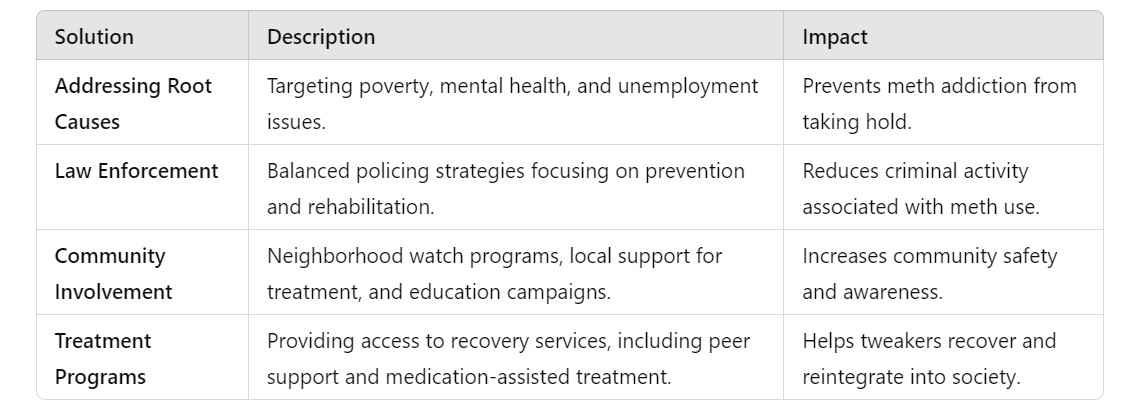The rise in methamphetamine abuse, often associated with “tweakers,” has become a significant issue in Oregon. Tweakers, a colloquial term for individuals addicted to methamphetamine, can cause public safety concerns, strain local resources, and disrupt community life. As the problem persists, many are searching for strategies on how to drive tweakers out of Oregon and restore a sense of safety and order.
In this article, we will explore effective solutions to address the root causes of meth addiction, community-based approaches to reduce its impact, and the role of law enforcement, treatment programs, and policy changes in driving this issue out of Oregon.
The Methamphetamine Crisis in Oregon
Methamphetamine abuse in Oregon is not a new problem. According to the Oregon Health Authority (OHA), methamphetamine-related deaths have been rising for the past decade, accounting for a significant portion of drug-related fatalities. In 2020 alone, Oregon saw a 37% increase in meth-related deaths. This has led to more visible issues, including increased crime, homelessness, and public disturbances, which many Oregonians directly attribute to meth addiction.
The key to addressing the meth crisis is tackling it from multiple angles: prevention, treatment, community involvement, and policy enforcement.

1. Understanding the Root Causes of Meth Addiction
To effectively drive tweakers out of Oregon, it’s crucial to understand what fuels meth addiction in the first place. Poverty, mental health issues, lack of affordable housing, and unemployment are all contributing factors. Communities where these issues are prevalent often see higher rates of methamphetamine abuse.
Addressing the root causes can help reduce the number of people who turn to meth. This means:
- Expanding access to affordable housing.
- Improving mental health services.
- Creating more employment opportunities, particularly for those with criminal records or who are at high risk of drug abuse.
These solutions may not be a quick fix, but they are essential for long-term success.
2. Law Enforcement Strategies: A Balanced Approach
While understanding and addressing the causes of addiction are essential, law enforcement still plays a significant role in driving tweakers out of Oregon. However, the key is balance. Heavy-handed tactics without providing support for addiction recovery can often push people deeper into the cycle of drug abuse. Oregon has taken a unique approach with its Measure 110, which decriminalized small amounts of meth and other drugs. The idea is to shift the focus from punishment to rehabilitation.
That said, there is still a need for targeted law enforcement efforts, especially when dealing with individuals who are involved in criminal activity. Some strategies include:
- Hotspot policing: Identifying areas where meth activity is high and focusing law enforcement efforts in those zones.
- Community policing: Building relationships between officers and communities to address the meth problem collaboratively.
- Drug task forces: Collaborating with state and federal agencies to crack down on meth production and distribution rings.
These approaches focus on both the individuals and the larger networks responsible for distributing meth, effectively reducing the problem at its source.
3. Community-Based Solutions
Communities have the power to drive change, and local involvement is critical in driving tweakers out of Oregon. Here are some effective community-based strategies:
a. Neighborhood Watch Programs
Organized neighborhood watch groups can deter drug-related activity by increasing visibility and vigilance. When communities take an active role in monitoring their neighborhoods and reporting suspicious activity, it becomes harder for drug users and dealers to operate freely.
b. Local Support for Treatment Programs
Supporting local treatment centers and outreach programs is a long-term solution that requires ongoing community involvement. Community members can volunteer, donate, or advocate for expanded resources to help tweakers get the help they need.
Programs that offer outpatient services, safe detox environments, and job training can create paths to recovery for those struggling with addiction.
c. Education and Awareness Campaigns
Educational programs in schools, workplaces, and community centers can raise awareness about the dangers of methamphetamine use. Prevention is a powerful tool, and teaching young people and at-risk populations about the risks of meth can prevent future addiction.
4. The Role of Treatment Programs
Oregon’s approach to drug decriminalization through Measure 110 aims to offer treatment instead of jail time. However, for this to work effectively, robust treatment options need to be available. A critical component in how to drive tweakers out of Oregon is ensuring that there are enough treatment beds and outpatient services for those seeking help.
Some successful models include:
- Medication-assisted treatment (MAT): Combining medications with therapy to reduce cravings and withdrawal symptoms.
- Peer support programs: Offering mentorship from individuals who have successfully overcome addiction to help guide others through their recovery journey.
- Housing-first initiatives: Providing stable housing to individuals struggling with addiction, even before they complete treatment. Studies show that stable housing improves recovery outcomes.
Table: The Pillars of Driving Tweakers Out of Oregon

This table outlines the key pillars in tackling the methamphetamine crisis in Oregon, offering a multi-faceted approach that combines prevention, law enforcement, community efforts, and treatment.
5. Policy Reform and Long-Term Strategies
Driving tweakers out of Oregon requires long-term policy changes that go beyond temporary fixes. The decriminalization of small amounts of meth is one such example, but it’s not without its challenges. Critics argue that decriminalization has not been paired with adequate investment in treatment, making it harder to connect people with the services they need.
Policymakers must consider a more comprehensive approach, including:
- Increased funding for mental health and addiction services.
- Expanding harm reduction programs such as needle exchanges and supervised injection sites to prevent overdoses and reduce the spread of diseases.
- Collaboration between state, local, and federal agencies to ensure meth distribution networks are dismantled, not just the individual users.
Conclusion
The question of how to drive tweakers out of Oregon is not simple. It requires a multi-pronged approach that addresses the root causes of meth addiction, strengthens community involvement, ensures robust law enforcement, and improves access to treatment. While there is no overnight solution, a comprehensive plan that combines prevention, treatment, and targeted law enforcement can make a significant impact. As Oregon continues to deal with the meth crisis, only a united effort from policymakers, law enforcement, healthcare providers, and the community can truly drive change and create safer neighborhoods.

FAQs
- What is Measure 110, and how does it impact tweakers in Oregon?
- Measure 110 decriminalizes the possession of small amounts of drugs, including meth, focusing on rehabilitation instead of punishment.
- How can communities help drive tweakers out of Oregon?
- Communities can organize neighborhood watch programs, support local treatment centers, and raise awareness about meth addiction.
- What role does law enforcement play in tackling meth addiction?
- Law enforcement focuses on targeted policing and breaking down meth distribution networks while working with rehabilitation programs.
- Why is treatment more effective than jail time for meth addiction?
- Treatment addresses the root causes of addiction and offers long-term solutions, while jail time often worsens addiction issues without proper rehabilitation.
- How does meth addiction impact Oregon’s communities?
- Meth addiction leads to increased crime, homelessness, and public disturbances, straining local resources and reducing community safety.
- What are some long-term solutions to Oregon’s meth problem?
- Long-term solutions include expanded mental health services, harm reduction programs, and collaborative efforts to dismantle meth distribution networks.











